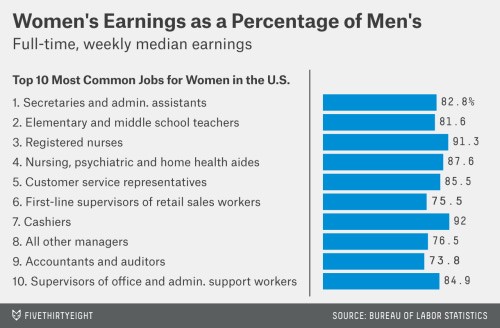State House Rep. Will Infantine (R-Manchester) made national headlines for his comments on the House floor yesterday opposing pay equity legislation.
“Men, by and large, make more because of some of the things they do,” he said. “Their jobs are, by and large, riskier. They don’t mind working nights and weekends. They don’t mind working overtime, or outdoors in the elements.”
“Men are more motivated by money than women are,” Infantine claimed.
Infantine was attempting to explain why it is that on average, full-time working women earn just 77 cents for every dollar a man earns. His explanation was inartful and offensive, but his message was one frequently repeated by Republicans opposing legislation to strengthen pay discrimination laws.
The numbers geeks at FiveThirtyEight offer a more thoughtful and dispassionate analysis of the 77-cents figure:
The figure is consistent with U.S. Census Bureau data, and it appears solid. But the long title of the graph (on page 11) — “Female-to-Male Earnings Ratio and Median Earnings of Full-Time, Year-Round Workers 15 Years and Older by Sex: 1960 to 2012″ — is a clue: The figure misses a lot of nuance. It doesn’t include part-time and seasonal workers and children under 15, but lumps together everyone else, regardless of their age, occupation, industry, education or how many hours they work (as long as they’re full-time).
Those are crucial distinctions because they explain at least part of the gender pay gap. Men tend to work more hours, they’re less likely to take time out of their careers to raise children, they’re overrepresented in better-paying industries, and they tend to hold more senior positions within those industries. The 77-cents-on-the-dollar figure doesn’t account for any of that.
It also doesn’t explain it. Do women go into lower-paying sectors because they prefer them, or because employers discriminate against them? Do women stay home with the kids because of cultural norms, or because of the way parental leave policies are set up? Lots of research has looked into these questions, but the 77-cents figure doesn’t address them.
FiveThirtyEight also drilled down and analyzed the pay gap in the 20 most common occupations for full-time female workers. In all 20, women earn a lower median weekly salary than men.



